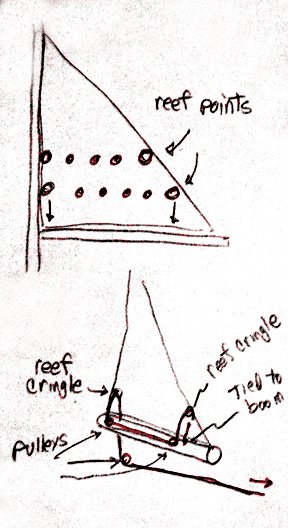What a folksy expression, but it probably fits what my friend Chris and I are doing on a quiet Saturday. Standing in the garage looking out on the 3-4″ of new snow in the driveway we reminisce about boating experiences.
He describes several times when his fishing boat… recommissioned as a pleasure craft…broke free of its mooring and was reported either by the coast guard or neighbors on far shores or tied up at a nearby wharf. So I counter with stories where the wind lifted my mooring block and carried my sailboat over in front of the ferry slip.
I talk about carefully timing the annual trips to the water in the spring and home in the fall to miss the ferry traffic. He counters with stories of quietly pulling his 28000-pound boat through the center of town on quiet early Sunday mornings pulled by a light pickup truck!
I talk about asking if the weigh station would weigh my boat, only to find it would also have to be inspected to be sure the trailer was road legal (virtually impossible with its 15′ width) and he talks about the challenge of picking up a new trailer in Massachusetts…a state that has no process to issue transit permits.
Sometimes these conversations can be one-upmanship, but I think yesterday it was discovering how much we have in common. Perhaps we can do some things together. After all, I point out to him, my annual fuel costs are about $20 while he can sink $500 in diesel for a one-day trip! But as my wife points out, such boats are able to travel quite independent of wind direction!

